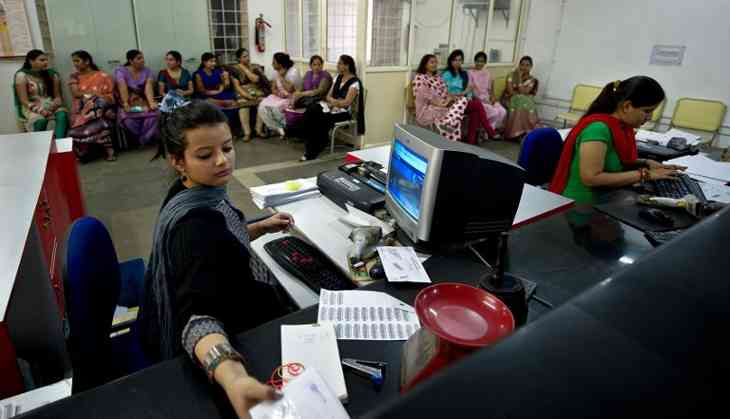World Bank report: India lags behind Sri Lanka & B'desh in terms of working women

The World Bank report on India's development has put the spotlight on a dark aspect hindering the country's economic growth.
The report, released on 29 May, has revealed that India has one of the lowest female participation rates in the workforce in the world, being ranked 120th among the 131 countries in the list.
The report states that only 27% of women of the age of 15 or older are working or actively looking for a job. Three of every five prime working age Indian women (26-45 years) are not economically active, meaning they neither work on a farm, nor in businesses, nor do they earn any wages.
According to the report, women's participation in the workforce in countries like China and Brazil is between 65-70%. Even neighbouring countries like Sri Lanka and Bangladesh fared better than India in this regard.
Among countries with similar income levels, India is at the bottom, together with Yemen, Pakistan and Egypt.
The reality
While this report may be shocking for some, the figures are not new. Government surveys over the years have repeatedly highlighted the stark gender inequality in India's workforce.
In fact, contrary to popular belief, the worst female participation rates in the workforce have been recorded in the urban areas in India, with New Delhi one of the worst at just 10.6%, according to a recent National Sample Survey data.
Women's participation in the paid workforce in the country is about 15%, as opposed to the 40-50% figure for men.
Expert analysis
Reacting to the report, Prof. Mary E John, faculty member and former director of the Centre for Women's Development Studies (CWDS), says not enough attention is being paid to increase women's employment in the country.
“The situation is even worse in urban areas, because rural areas employ large proportions of women in agriculture. Women living in urban areas do not have those opportunities. While many may think that urban women are mostly employed in the banking sector or finance or BPOs etc, the reality is that the highest urban sources of income for women are primary and secondary school teachers, and paid domestic workers.”
According to the World Bank report, India has one of the highest percentage of women graduates in science and technology at 42%, compared to countries like Indonesia or Brazil, but only 34% of women with a post-secondary degree are in the labour market.
Junaid Ahmad, World Bank Country Director in India, says: “India's female labour force participation rate is uniquely low for all levels of education. About 65% of Indian women with college degrees are not working, whereas 41% in Bangladesh, and about 25% in Indonesia and Brazil do not work.”
The issues
Prof. John feels that education qualifications are not a problem. “Urban Indian women are fairly qualified. And even uneducated women must have employment opportunities in the labour market. The truth is that there are simply not enough jobs for women in India,” she says.
The pattern of economic growth in India is not entirely inclusive of women. For example, many industries aiding economic growth (manufacturing, real estate etc) aren't employing nearly enough women.
“There are a few reasons why women have such a low participation in the workforce. First, there is still a stigma attached to women working, especially after marriage. The increase in the earning capacity of men also leads to women not being required to work. So, many educated urban women give up their jobs after marriage and maternity,” Prof. John says.
“Second, there is also a caste-based element; public labour is associated as low-caste labour. Third, and most important, there are barely any decent or safe jobs that our economy is offering to women in growing industries. That is the most problematic aspect.”
The fix
The government, however, has taken some steps in favour boosting women in the workforce. Parliament passed a law in March that has doubled maternity leave and allowed female employees to work from home. PM Modi even launched a programme for skills development, and set up a subsidised loan scheme for women-led businesses.
Prof. John feels the economy has to become more inclusive of women. “If the economy changes in favour of women, everything else will follow. If women get decent opportunities in growing industries, the Indian growth will improve substantially,” he says.
According to an assessment done by the World Bank, India's GDP growth can go up by a full percentage point if the gap in female labour force participation rate with Bangladesh or Indonesia is halved.
The key to closing the gender gap is to create more jobs, especially regular salaried jobs that are flexible and can be safely accessed by women, the report added.
First published: 30 May 2017, 23:02 IST

